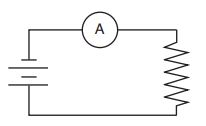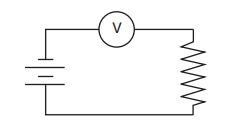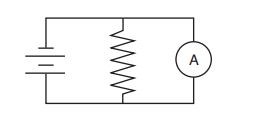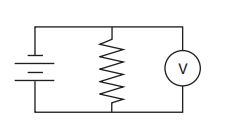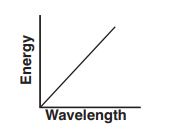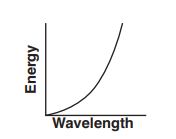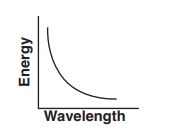1. A unit used for a vector quantity is
(1) watt
(2) newton
(3) kilogram
(4) second
2. A displacement vector with a magnitude of meters could have perpendicular components with magnitudes of
(1) m and
m
(2) m and
m
(3) m and
m
(4) m and
m
3. A hiker travels kilometer south, turns and travels
kilometers west, and then turns and travels
kilometers north. What is the total distance traveled by the hiker?
(1) km
(2) km
(3) km
(4) km
4. A car with an initial velocity of meters per second east slows uniformly to
meters per second east in
seconds. What is the acceleration of the car during this
-second interval?
(1)
west
(2)
east
(3)
west
(4)
east
5. On the surface of planet , a body with a mass of
kilograms weighs
newtons. The magnitude of the acceleration due to gravity on the surface of planet
is
(1)
(2)
(3)
(4)
6. A car traveling in a straight line at an initial speed of meters per second accelerates uniformly to a speed of
meters per second over a distance of
meters. What is the magnitude of the acceleration of the car?
(1)
(2)
(3)
(4)
7. An object starts from rest and falls freely for meters near the surface of planet
. If the time of fall is
seconds, what is the magnitude of the acceleration due to gravity on planet
?
(1)
(2)
(3)
(4)
8. If a block is in equilibrium, the magnitude of the block’s acceleration is
(1) zero
(2) decreasing
(3) increasing
(4) constant, but not zero
9. The diagram below shows a light ray striking a plane mirror.
What is the angle of reflection?
(1)
(2)
(3)
(4)
10. An electric field exerts an electrostatic force of magnitude newton on an electron within the field. What is the magnitude of the electric field strength at the location of the electron?
(1) N/C
(2) N/C
(3) N/C
(4) N/C
11. A -kilogram cart,
, and a
-kilogram cart,
, are initially held together at rest on a horizontal, frictionless surface. When a compressed spring attached to one of the carts is released, the carts are pushed apart. After the spring is released, the speed of cart
is
meters per second, as represented in the diagram below.
What is the speed of cart after the spring is released?
(1) m/s
(2) m/s
(3) m/s
(4) m/s
12. An electron in a magnetic field travels at a constant speed in the circular path represented in the diagram below.
Which arrow represents the direction of the net force acting on the electron when the electron is at position ?
(1)
(2)
(3)
(4)
13. The potential difference between two points, and
, in an electric field is
volts. The energy required to move a charge of
coulomb from point
to point
is
(1) J
(2) J
(3) J
(4) J
14. Which statement describes the gravitational force and the electrostatic force between two charged particles?
(1) The gravitational force may be either attractive or repulsive, whereas the electrostatic force must be attractive.
(2) The gravitational force must be attractive, whereas the electrostatic force may be either attractive or repulsive.
(3) Both forces may be either attractive or repulsive.
(4) Both forces must be attractive.
15. An electrostatic force exists between two -coulomb point charges separated by a distance of
meter. As the distance between the two point charges is decreased, the electrostatic force of
(1) attraction between the two charges decreases
(2) attraction between the two charges increases
(3) repulsion between the two charges decreases
(4) repulsion between the two charges increases
16. What is the energy of the photon emitted when an electron in a mercury atom drops from energy level f to energy level b?
(1) eV
(2) eV
(3) eV
(4) eV
17. An observer counts complete water waves passing by the end of a dock every
seconds. What is the frequency of the waves?
(1) Hz
(2) Hz
(3) Hz
(4) Hz
18. Copper is a metal commonly used for electrical wiring in houses. Which metal conducts electricity better than copper at C?
(1) aluminum
(2) gold
(3) nichrome
(4) silver
19. A motor does joules of work on a block, accelerating the block vertically upward. Neglecting friction, if the gravitational potential energy of the block increases by
joules, its kinetic energy
(1) decreases by J
(2) increases by J
(3) decreases by J
(4) increases by J
20. When only one lightbulb blows out, an entire string of decorative light goes on. The lights in this string must be connected in
(1) parallel with one current pathway
(2) parallel with multiple current pathways
(3) series with one current pathway
(4) series with multiple current pathways
21. An electric toaster is rated watts at
volts. What is the total electrical energy used to operate the toaster for
seconds?
(1) J
(2) J
(3) J
(4) J
22. What is the rate at which work is done in lifting a -kilogram object vertically at a constant speed of
meters per second?
(1) W
(2) W
(3) W
(4) W
23. When a wave travels through a medium, the wave transfers
(1) mass, only
(2) energy, only
(3) both mass and energy
(4) neither mass nor energy
24. Glass may shatter when exposed to the sound of a particular frequency. This phenomenon is an example of
(1) refraction
(2) diffraction
(3) resonance
(4) the Doppler effect
25. Which waves require a material medium for transmission?
(1) light waves
(2) radio waves
(3) sound waves
(4) microwaves
26. Which type of oscillation would most likely produce an electromagnetic wave?
(1) a vibrating tuning fork
(2) a washing machine agitator at work
(3) a swinging pendulum
(4) an electron traveling back and forth in a wire
27. If monochromatic light passes from water into the air with an angle of incidence of , which characteristic of the light will remain the same?
(1) frequency
(2) wavelength
(3) speed
(4) direction
28. The absolute index of refraction of medium is twice as great as the absolute index of refraction of medium
. As a light ray travels from medium
into medium
, the speed of the light ray is
(1) halved
(2) doubled
(3) quartered
(4) quadrupled
29. The diagram below shows a transverse wave moving toward the right along a rope.
At the instant shown, point on the rope is moving toward the
(1) bottom of the page
(2) top of the page
(3) left
(4) right
30. When an isolated conductor is placed in the vicinity of a positive charge, the conductor is attracted to the charge. The charge of the conductor
(1) must be positive
(2) must be negative
(3) could be neutral or positive
(4) could be neutral or negative
31. The quarks that compose a baryon may have charges of
(1) , and
(2) and
(3) and
(4) and
32. A rubber block weighing newtons is resting on a horizontal surface of dry asphalt. What is the magnitude of the minimum force needed to start the rubber block moving across the dry asphalt?
(1) N
(2) N
(3) N
(4) N
33. The data table below lists the mass and speed of four different objects.
Which object has the greatest inertia?
(1)
(2)
(3)
(4)
34. The electroscope shown in the diagram below is made completely of metal and consists of a knob, a stem, and leaves. A positively charged rod is brought near the knob of the electroscope and then removed.
The motion of the leaves results from electrons moving from the
(1) leaves to the knob, only
(2) knob to the leaves, only
(3) leaves to the knob and then back to the leaves
(4) knob to the leaves and then back to the knob
35. Which circuit diagram represents the correct way to measure the current in a resistor?
(1)
(2)
(3)
(4)
36. The height of a typical kitchen table is approximately
(1) m
(2) m
(3) m
(4) m
37. A ball is thrown with a velocity of meters per second at an angle of
above the horizontal. Which quantity has a magnitude of zero when the ball is at the highest point in its trajectory?
(1) the acceleration of the ball
(2) the momentum of the ball
(3) the horizontal component of the ball’s velocity
(4) the vertical component of the ball’s velocity
38. The graph below represents the relationship between velocity and time of travel for a toy car moving in a straight line.
The shaded area under the line represents the toy car’s
(1) displacement
(2) momentum
(3) acceleration
(4) speed
39. A spring stores joules of elastic potential energy when it is compressed
meter. What is the spring constant of the spring?
(1) N/m
(2) N/m
(3) N/m
(4) N/m
Base your answers to questions 40 and 41 on the information below and on your knowledge of physics.
A cannonball with a mass of kilogram is fired horizontally from a
-kilogram cannon, initially at rest, on a horizontal, frictionless surface. The cannonball is acted on by an average force of
newtons for
second.
40. What is the magnitude of the change in momentum of the cannonball during firing?
(1) kg.m/s
(2) kg.m/s
(3) kg.m/s
(4) kg.m/s
41. What is the magnitude of the average net force acting on the cannon?
(1) N
(2) N
(3) N
(4) N
42. A metal sphere, , has an initial net charge of
coulomb and an identical sphere,
, has an initial net charge of
coulomb. The spheres touch each other and then separate. What is the net charge on sphere
after the spheres have separated?
(1) C
(2) C
(3) C
(4) C
43. A constant eastward horizontal force of newtons is applied to a
-kilogram crate moving toward the east on a level floor. If the frictional force on the crate has a magnitude of
newtons, what is the magnitude of the crate’s acceleration?
(1)
(2)
(3)
(4)
44. Which graph represents the relationship between the energy of photons and the wavelengths of photons in a vacuum?
(1)
(2)
(3)
(4)
Base your answers to questions 45 and 46 on the information and diagram below and on your knowledge of physics.
One end of a long spring is attached to a wall. A student vibrates the other end of the spring vertically, creating a wave that moves to the wall and reflects back toward the student, resulting in a standing wave in the spring, as represented below.
45. What is the phase difference between the incident wave and the reflected wave at point ?
(1)
(2)
(3)
(4)
46. What is the total number of antinodes on the standing wave in the diagram?
(1)
(2)
(3)
(4)
47. The diagrams below represent four pieces of copper wire at C. For each piece of wire,
represents a unit length and
represents a unit of cross-sectional area.
The piece of wire that has the greatest resistance is
(1) wire
(2) wire
(3) wire
(4) wire
Base your answers to questions 48 and 49 on the diagram below, which represents two charged, identical metal spheres, and on your knowledge of physics.
48. The number of excess elementary charges on sphere is
(1)
(2)
(3)
(4)
49. What is the magnitude of the electric force between the two spheres?
(1) N
(2) N
(3) N
(4) N
50. The diagram below represents the wavefronts produced by a point source moving to the right in a uniform medium. Observers are located at points and
.
Compared to the wave frequency and wavelength observed at point , the wave observed at point
has a
(1) higher frequency and a shorter wavelength
(2) higher frequency and a longer wavelength
(3) lower frequency and a shorter wavelength
(4) lower frequency and a longer wavelength







